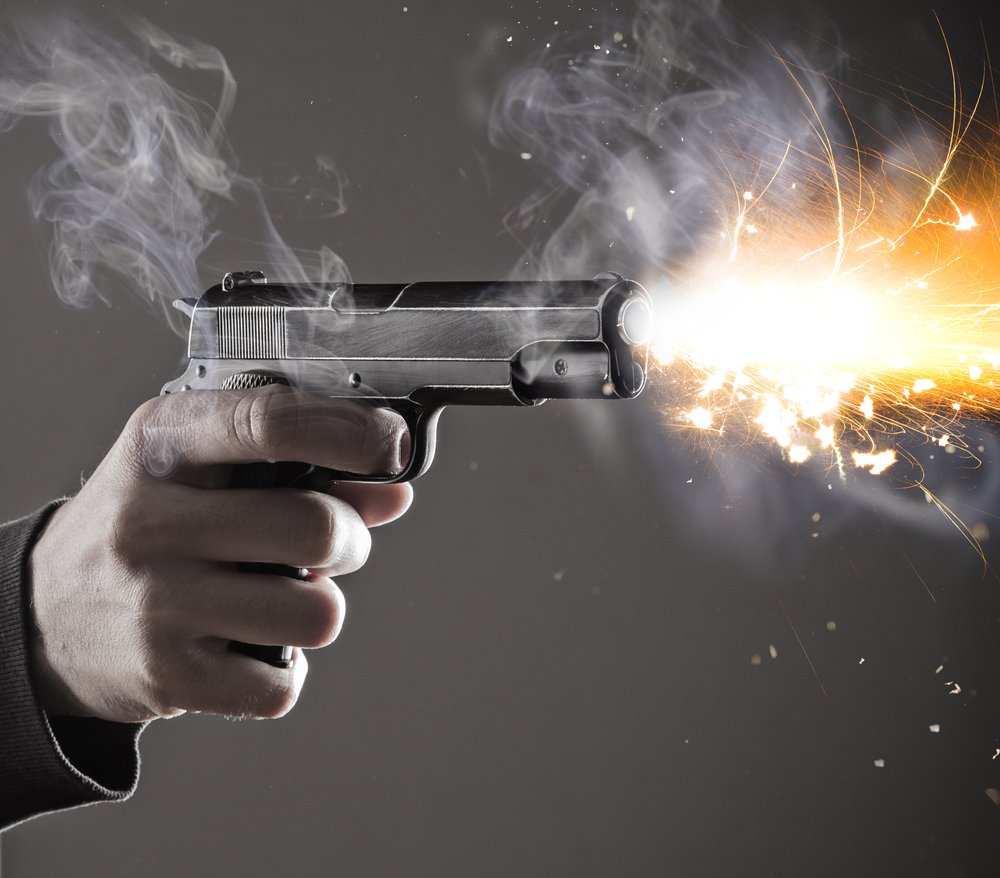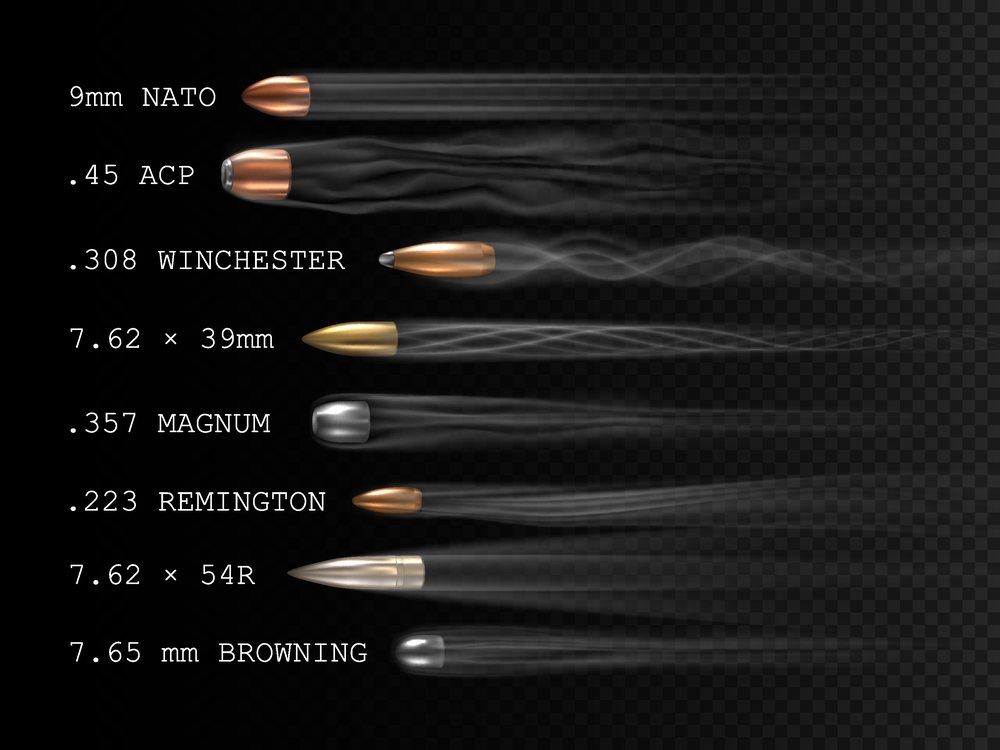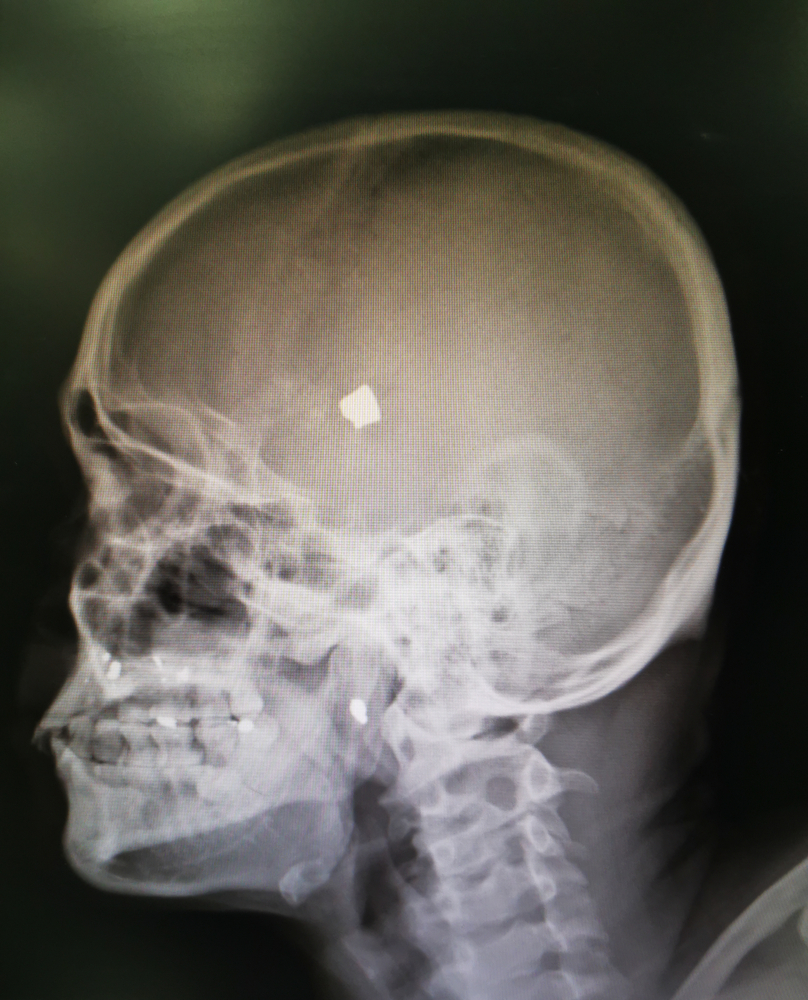There is almost no chance of surviving a gunshot to the head, but even if you do survive, no one can come out of such an injury unharmed, which is why gun violence is one popular media depiction that no one wants to see translated into reality.
Popular culture, action movies, and the media love to highlight anyone that takes a gunshot to the head and still manages to survive. Victims of gunshots are depicted in many ways, often having lost some memories, but are otherwise alive and walking around! As science aficionados, we have often scoffed at this idea. Surely, no one can survive a bullet to the head, right? Well, that’s almost right. Statistically speaking, you would be correct 95% of the time. However, there is still a lucky 5% who endure, despite literally staring death in the face.
The chance of surviving a headshot has its roots in the physics of the bullet and the biology of our bodies. Thus, a person’s odds of surviving a headshot trauma depend on the type and size of the bullet, its velocity, its trajectory, and the entry and exit point of the bullet. So, to begin, let’s try to understand the science of headshots and the aftermath of getting hit by a bullet.

Location Of The Injury Is Critical
The most important factor from a biological standpoint to determine survivability from a gunshot is the location where the bullet hits and passes through. The brain is a marvelous mystery, with each little cluster governing specific vital and not-so-vital functions of the body. Responsible for controlling involuntary actions, for example, the brain stem is a critical part of our body. A shot directed towards it is often fatal. The degree of injury would depend on which region the bullet penetrates through.
If it zips through the amygdala or the hypothalamus, the injury would lead to memory loss and other memory-related problems. This is the symptom that is most commonly exploited in the daily soaps that your grandma loves so much! If the injury is to the frontal lobe (also seen frequently, as this is situated behind the forehead), then the survivability increases.

There is also a much greater chance of surviving a front-to-back gunshot than a gunshot received from the side. This is because, in the case of a front-to-back gunshot, it’s possible that the bullet will only damage one hemisphere of the brain, while the other is left unaffected. Our brain is a resilient organ and tantamount to a twin-engine plane that can work even upon losing one engine. Major functions like cognition and speech are shared between the two hemispheres of the brain, so if one hemisphere is left intact by the bullet, the individual still has a decent chance of bouncing back from the ordeal, though never again with complete psychological and physical health.
Blood Loss After A Gunshot Proves Fatal
Since the brain stem is nestled safely at the back of the head, brain death is not usually the outright concern for the victim, but rather blood loss. The amount of blood that is potentially lost is directly influenced by the size and speed of the bullet fired. If a bullet hits any other part of the body, the impact is released to the adjoining body parts, often stabilizing the damage and saving the individual.
However, the case of the skull is unique, on account of its enclosed structure. If a high-speed bullet is fired into the skull, the skull bears the full brunt of the force, leading to skull fractures. Skull shards that pierce the brain at that point are even more difficult to remove than the bullet itself. If the skull is subjected to a high-speed, but small bullet, the worry is that the tiny bullet would ricochet around after entering the brain cavity, damaging several areas of the brain at once. The best-case scenario for survival is therefore a small, low-velocity bullet fired from a distance… with a low-caliber gun.
So far, we have discussed the gunshot mostly from a biological standpoint. Let’s now consider the fatality of the gunshot from a physics standpoint.
Also Read: What Would Happen If Someone Shot A Gun On An Airplane?
Mass And Velocity Of The Bullet Also Determines Fatality Of The Gunshot
From a physics standpoint, fatality would also be influenced by the projectile of the fired bullet. We all know kinetic energy is given by the formula:
![]()
Here,
KE= kinetic energy
m=mass
v=velocity
This may explain why an injury inflicted by a fast-moving heavy bullet is likely to be more lethal. As we can see, the velocity of the bullet is much more crucial than the mass of the bullet, as evident from the formula. Although both mass and velocity contribute to the overall energy of the bullet’s projectile, the energy is linearly proportional to the mass, but exponentially proportional to the velocity. Let’s understand this with an example: For a constant velocity of a bullet, if the mass is doubled then the resultant projectile energy is also doubled. But on the other hand, for the constant mass of the bullet if the velocity is doubled, then the energy increase quadruples i.e. increases four times.

As you can see, fatality and time to death would heavily depend on the velocity of the bullet. The velocity of the bullet, in turn, depends on the firearm being used. For example, a bullet shot from the lethal AK-47 rifle has a very high speed. They are infamous for inflicting severe peripheral damage to the critical regions in the brain as they path through, as compared to a relatively slower-moving bullets from a handgun.

The US military conventionally uses 5.56mm bullets, which have a comparatively lower mass than a typical bullet, but move really quick. As a result, they produce much more kinetic energy, which is then transmitted to the tissues of the target, causing them to rupture.
Also Read: Can Gunshots Really Knock People Off Their Feet?
Can You Survive A Bullet To The Head?
As mentioned earlier, blood loss is the real villain in such scenarios, but there is a window of a few minutes wherein the victim can remain conscious and survive. If the victim immediately receives medical attention during this time, there is a better chance of avoiding an untimely end.

Neurosurgeons opine that victims stand a chance to survive a headshot if they can continue breathing and their blood pressure does not drop too much. Both functions are essential to ensure an adequate supply of oxygen to the brain in this exigency. Upon the arrival of medical aid, the doctors can try their best to remove the dead tissue and clear the area to relieve the imminent swelling. Otherwise, the swelling will have no outlet and begin to come out at the base, which often has fatal consequences. Sometimes, doctors place drains to remove excess fluids and avert this type of dangerous brain-swelling.
Case Study Of Christen McGinnes: Remarkable Story Of A Headshot Survivor
In 2016, The Trace, a non-profit gun-specific news portal published a story of Christen McGinnes, who survived a self-inflicted gunshot wound in her suicide attempt in 2009. She narrated her remarkable story of miraculously surviving a deliberate gunshot to her head to end her life.
During the subprime crisis in 2009, Christen, a woman in her 40s, was fired from a job, lost her close kin and even her pet dog passed away. It was the peak of the financial crisis of 2009 and she was running out of savings in such challenging times. On one particularly fateful night in 2009, she loaded her 0.357 revolver with hollow-point bullets and placed the gun underneath her chin, a shot that she felt would result in instant death.
She pulled the trigger and while she blew off much of her face, lost many teeth, charred her tongue and lost an eye, she miraculously survived. She was immediately rushed to Fairfax Inova Hospital by her neighbors, where she was treated. She had to undergo several surgeries and was in semi-coma state for a number of weeks in the hospital. Her face was distorted and she couldn’t eat or speak without aid for a long time. It was only after a few years that she could talk again and narrate her remarkable story of surviving the suicide attempt.
So, as you can see, there is a chance—albeit a very slim one—to survive a gunshot to the head. However, the aftermath of surviving a gunshot is scary. As in the case of Christen, she ended up losing more than half of her teeth, one-third of her tongue and half her vision. No patient can come out of such a terrible injury unscathed, which is why rampant gun violence and responsible access to firearms is a critical issue that must be addressed in our modern world.
Also Read: Why Is It Important To Keep A Victim Conscious After A Serious Injury?
How well do you understand gunshot to the head injuries?

References (click to expand)
- Muehlschlegel, S., Ayturk, D., Ahlawat, A., Izzy, S., Scalea, T. M., Stein, D. M., … Sheth, K. N. (2016, October 26). Predicting survival after acute civilian penetrating brain injuries. Neurology. Ovid Technologies (Wolters Kluwer Health).
- Cranial GunShot Wounds - UCLA Neurosurgery, Los Angeles, CA - neurosurgery.ucla.edu:80
- Neurosurgical Treatment for Gunshot Wound Head Trauma. The American Association of Neurological Surgeons
- . (2004). Firearms and Violence. []. National Academies Press.
